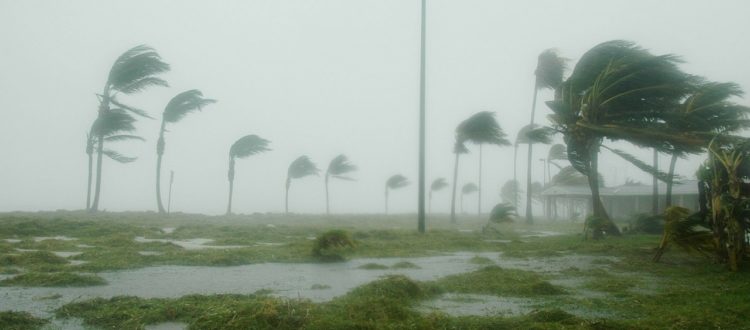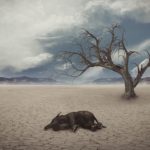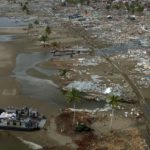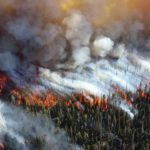
Hurricanes are some of the most destructive kinds of natural disasters today. They cause destruction to property and loss of life every year. The biggest hurricane in the world known as the Great Galveston Hurricane occurred in the United States in the 1900’s. The deadly hurricane resulted in about 1000 deaths and an estimated damage of about $25 billion in today’s currency. This figure manifests the destructive capability of hurricanes, which is why understanding them and knowing how to get prepared is vital for humanity.
Hurricanes don’t develop out of thin air, they begin as small storms that grow into larger, more dangerous ones. A hurricane starts as a tropical depression, which is a tropical spinning storm with wind speeds less than 39 mph. As it grows into adolescence, the tropical depression develops into a tropical storm, which is a tropical spinning storm with wind speeds between 40 and 73 mph. If it develops into a full adult storm, it becomes a hurricane, which is a tropical spinning storm with wind speeds above 74 mph.
After becoming a hurricane, the storm is further categorized as a 1, 2, 3, 4 or 5, increasing with danger and damage as the number increases. A category 1 storm is the weakest hurricane, with wind speeds of 74 – 95 mph. A category 5 hurricane is a very strong storm. Category 5 hurricanes are very dangerous and do extensive damage. These storms have wind speeds of 155 mph and more. All hurricanes, even category 1 hurricanes, can be dangerous and damaging.
Causes of Hurricanes
Warm water, moist warm air, and light upper-level winds are the key ingredients to the formation of hurricanes. Hurricanes begin when masses of warm, moist air from oceans surfaces starts to rise quickly, and collide with masses of cooler air. The collision prompts the warm water vapor to condense, eventually forming storm clouds and dropping back as rain. During the condensation process, latent heat is emitted. The latent heat warms the cool air above, leading it to rise and pave the way for warmer, humid air coming from below the ocean.
Negative Effects of Hurricanes
Impact on ecosystem – plants and animals can be exterminated during hurricanes because of the devastating winds, storm surges, and flooding. Animals that rely on these creatures as a source of food may die if an alternative source is not found. Beaches bear the biggest brunt of hurricanes; they get eroded when storms reach the shorelines. Creatures that thrive on beaches can be washed away by severe hurricanes. Also, sediment erosion and deposition normally impact coral reefs and oyster beds. The introduction of salt water by hurricanes to nearby freshwater streams and lakes leads to enormous fish kills and destruction of lakeside habitat.
Agricultural impact – Heavy rains and strong winds from hurricanes can damage crops and kill livestock. The greater fear for most farmers is contamination of crops by water originating from floods. The heavy rains and flooding result in filling and causing overflow of hog lagoons. This overflowing water can contaminate certain crop species. This phenomenon could also lead to loss of harvest as a result of dramatic effect of flooding of seeds.
Effect on humans – Hurricane winds can do a whole lot of destruction. However, waves, storm surges, rain and river floods can also contribute to massive destruction. The amount of damage caused hinges on many factors including the size of the storm, intensity, and its angle approach. Collapsing building can lead to injury and death, but the biggest impacts of hurricane occur after the storm. Destroyed property and infrastructure often take years to restore, and this impacts individuals’ economic status.
What can we do to manage victim protection of hurricanes?
- Hurricane forecasts have traditionally focused on predicting a storm’s track and intensity. The track and size of the storm determine which areas may be hit. To do so, forecasters use models – essentially software programs, often run on large computers. Unfortunately, sometimes these forecasts show dramatically different paths, diverging by hundreds of miles. Other times, the models are in close agreement. Even when models are in close agreement, the small differences in track have very large differences in storm surge, winds and other factors that impact damage and evacuations. By knowing all of that it is clear that still it is hard to predict with 100% assurance where and what kind of hurricane will appear. But there is one aspect we can do for sure – to prepare for this catastrophe and be ready for it at any time.
- Our scientists and researchers are working on scientific researches how to prevent protection to hurricane victims and how to predict the coming danger. The main goal is to make a hurricane evacuation plan which includes the evacuation and immediate help in the regions with the highest risk of danger. It means that researchers will make a plan how to make a unified system among the danger zones and how to make it work most efficiently. Our scientists will work also on developing the predicting systems and in the results of research will be seen the list of suggestions about this topic.
- Third aspect our team is working on – recovering program after the hurricane. It is planned to be as well as a unified system for the danger zones. In our research we will invite people with new program and suggestions how to recover damaged areas to be safe for people and animals. Your help is needed!
Thank you for understanding and your concerns about hurricane victims protection.



